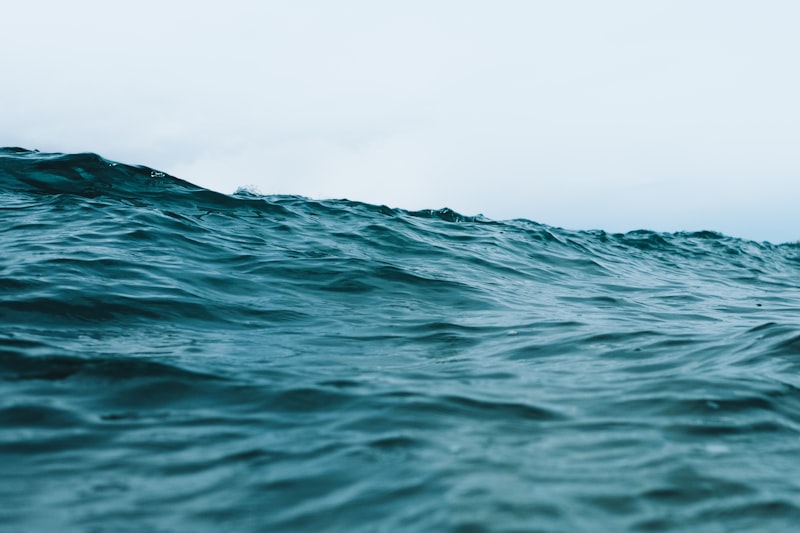Have you ever stood by the ocean and marveled at the ebb and flow of the tides? Ocean tides are not just a rhythmic rise and fall of water; they are a fascinating dance of nature influenced by celestial bodies and coastal geography.
Ocean tides occur due to the gravitational pull of the moon and, to a lesser extent, the sun. As the moon orbits the Earth, its gravitational force creates bulges in the ocean water, causing high tides. These high tides occur twice a day, approximately every 12 hours and 25 minutes, as the Earth rotates within this tidal “bulge.”
But here’s where the diversity of ocean tides comes into play: not all tides are created equal. Along coastlines worldwide, various factors like the shape of the coastline, depth of the ocean floor, and proximity to land masses influence the characteristics of tides. In some places, tides can be barely noticeable, while in others, they can rise and fall dramatically, affecting local ecosystems and human activities.
For instance, regions with a funnel-shaped coastline or narrow bays may experience amplified tides known as “funnel tides.” These areas concentrate the water flow, intensifying the tidal range and creating powerful currents. Conversely, in broad, shallow bays, tides may be more gradual and gentle.
The Bay of Fundy in Canada boasts some of the highest tidal ranges in the world, with waters rising and falling by over 50 feet between low and high tide. This extreme tidal range has sculpted the coastline and created unique ecosystems adapted to the rhythm of the tides.
Furthermore, ocean tides vary not only spatially but also temporally. Factors like the phase of the moon (new moon vs. full moon) and seasonal changes can alter tidal patterns. During spring tides, which occur around the new moon and full moon when the sun and moon align, tidal ranges are enhanced, leading to higher high tides and lower low tides.
The diversity of ocean tides is a testament to the complexity and beauty of our natural world. From the gentle lapping of waters on some shores to the thunderous surges in others, tides shape coastal landscapes and ecosystems in ways that continue to awe and inspire us.
This article aims to capture the reader’s interest with engaging descriptions and factual information about ocean tides, maintaining a conversational tone throughout.
Exploring the Mysteries: How Different Oceans Experience Tides Differently
Picture this: you’re standing on a beach, watching the waves gently lap at the shore. The rhythm of these waves is influenced by the moon’s gravitational pull. This gravitational force causes the ocean waters to bulge towards the moon, creating high tides. Conversely, on the opposite side of the Earth, there is another high tide due to the centrifugal force caused by the Earth and moon’s orbital motion. This phenomenon results in two high tides and two low tides each day in most coastal areas.
But here’s where it gets intriguing: not all tides are created equal. The shape and depth of ocean basins, the coastline configuration, and even the Earth’s rotation all play crucial roles in shaping how tides manifest across different oceans. Take the Atlantic and Pacific Oceans, for instance. The Atlantic, with its narrow and funnel-like shape, experiences more significant tidal ranges compared to the Pacific, which is wider and more open. This difference occurs because the water in the Atlantic is constrained to move through narrow channels and bays, causing higher tides.
Now, think about the Indian Ocean. Its tides are influenced by monsoon winds and unique coastal geography, resulting in a tidal pattern distinct from both the Atlantic and Pacific. The Indian Ocean’s tides exhibit a more subtle rise and fall, reflecting its own geographic and meteorological characteristics.
Zooming in closer, even within the same ocean, tidal patterns can vary from region to region. The Bay of Fundy in Canada boasts some of the highest tides in the world, reaching over 50 feet in height due to its funnel-like shape and resonance phenomenon. Compare that to the Mediterranean Sea, where tidal ranges are minimal because of its narrow connection to the Atlantic Ocean and limited open water.
From the Arctic to the Antarctic: Contrasting Tidal Patterns Across Earth’s Oceans
In the Arctic, tides experience a more subdued cycle compared to their counterparts in the Antarctic. This is largely due to the Arctic’s semi-enclosed nature, where the ocean is partly constrained by surrounding landmasses. Tidal movements here are influenced by local topography, such as fjords and shallow continental shelves, which can amplify or dampen tidal effects depending on their shape and depth.
Conversely, the Antarctic, with its vast expanse of open waters and fewer land barriers, witnesses more pronounced tidal variations. The Southern Ocean, encircling the continent, allows tides to propagate freely, leading to higher tidal ranges along the coastlines. This expansive openness enhances the influence of lunar and solar gravitational forces, resulting in tidal amplitudes that can be several meters high, especially near the Antarctic Peninsula.
Understanding these contrasting tidal dynamics is crucial not only for scientific study but also for practical applications such as coastal engineering and navigation. The Arctic’s quieter tides may present challenges for certain maritime activities, while the Antarctic’s more dynamic tides can impact everything from ecosystem dynamics to sea ice movement.
While both polar regions experience tidal fluctuations driven by celestial bodies, their distinct geographies impart unique characteristics to these tidal patterns. Exploring these differences not only enriches our understanding of oceanic processes but also underscores the importance of local environmental factors in shaping global phenomena like tides.
The Dance of the Moon and Sun: Unveiling the Varied Causes of Ocean Tides

Have you ever wondered about the mesmerizing rhythm of ocean tides, driven by the celestial dance of the Moon and Sun? The ebb and flow of the ocean’s waters hide a fascinating tale of astronomical forces at play.
Ocean tides are primarily influenced by the gravitational pull of the Moon and, to a lesser extent, the Sun. Imagine the Moon’s gravity as an invisible hand gently pulling at Earth, causing the oceans to bulge towards it. As the Earth rotates on its axis, different parts of the ocean experience high and low tides, creating a rhythmic rise and fall that spans our planet’s coastlines twice a day.
But why do tides vary in height and strength? It all boils down to several key factors. Firstly, the position of the Moon relative to the Earth affects the gravitational pull it exerts. During a full or new moon, when the Sun, Earth, and Moon align (syzygy), we experience higher high tides (spring tides) and lower low tides. Conversely, during the Moon’s quarter phases, when the Sun and Moon form a right angle with Earth, the tidal range is smaller (neap tides).
Moreover, the Sun also plays a role, albeit less significant than the Moon, due to its greater distance from Earth. When the Sun and Moon align during new moon and full moon phases, their gravitational forces combine, intensifying the tidal effects.
Interestingly, geographical factors such as the shape of coastlines, the depth of the ocean floor, and even the Earth’s rotation influence local tidal patterns. Narrow bays may experience amplified tides, while deep oceans may have more subdued tidal movements.
The dance of the Moon and Sun orchestrates the mesmerizing spectacle of ocean tides, where gravitational forces intertwine with Earth’s rotation and geographical features to create a natural symphony that shapes our coastlines daily.
Tide Tales: A Global Tour of the Most Unique Tidal Phenomena
Ever wondered about the marvels of nature that unfold with the ebb and flow of tides across the globe? From the majestic tidal bores of China’s Qiantang River to the surreal tidal island of Mont Saint-Michel in France, our planet boasts some of the most unique tidal phenomena that continue to mesmerize explorers and scientists alike.
One of the most awe-inspiring tidal spectacles occurs in the Bay of Fundy, Canada, where the tides reach staggering heights of over 50 feet, the highest in the world. Here, visitors can experience the dramatic transformation of landscapes as the powerful tides expose fossil-rich mudflats and sculpted rock formations twice a day.
Moving eastward, the Severn Bore in England offers a thrilling natural spectacle as a tidal wave travels upstream against the flow of the River Severn. Surfers from around the world flock to ride this tidal surge, which can reach heights of up to 9 feet and speeds of 13 miles per hour, creating a thrilling adventure against a picturesque English backdrop.
In contrast, the unique Pororoca phenomenon in Brazil turns the Amazon River into a roaring tidal wave that travels inland, attracting surfers and adventurers seeking to conquer its powerful currents and challenging waves.
These tidal wonders not only showcase the dynamic forces of nature but also highlight the interconnectedness of our planet’s oceans and rivers. Whether you’re exploring the serene tidal flats of the Wadden Sea in Germany or witnessing the tidal whirlpools of the Saltstraumen in Norway, each location offers a glimpse into the ever-changing rhythm of tides and their profound impact on coastal ecosystems.
Join us on a journey across continents to witness these breathtaking tidal phenomena that continue to inspire curiosity and wonder among travelers and scientists alike.

This article aims to captivate readers with vivid descriptions of unique tidal phenomena while maintaining a conversational tone and employing engaging language to keep the reader intrigued.
Tidal Rhythms: Understanding the Influence of Geography on Oceanic Tides
Have you ever stood on the shore and marveled at the rhythmic rise and fall of ocean tides? These tidal rhythms, influenced deeply by geography, hold a fascinating grip on coastal landscapes worldwide.
Geography plays a pivotal role in shaping oceanic tides. The gravitational pull of the moon is a primary driver, but geographic factors such as coastline shape, depth of the ocean floor, and proximity to landmasses also exert significant influence. Imagine the ocean as a gigantic bathtub where the water sloshes back and forth. The bathtub’s shape (coastline) and obstacles within it (landmasses and underwater ridges) determine how the water moves.
Coastline configuration affects tide patterns dramatically. In funnel-shaped bays or estuaries, tides can amplify, creating higher highs and lower lows known as tidal ranges. Conversely, in wider, more open coastal areas, tides tend to be more moderate.
Depth is another crucial factor. Shallow coastal areas experience greater tidal movement compared to deeper offshore waters. Think of how water behaves differently in a puddle versus a lake; the same principle applies on a larger scale in the ocean.
Furthermore, proximity to landmasses alters tidal behavior. Coastal regions adjacent to narrow straits or channels experience intensified tidal currents due to the constriction of water flow, akin to water speeding up as it flows through a narrow stream.
Understanding these geographic influences is key to comprehending tidal phenomena. It’s not just about the moon’s gravitational pull; it’s about how the Earth’s features interact with this cosmic dance. Next time you visit the coast, take a moment to observe these tidal rhythms—each rise and fall telling a story of geography’s profound impact on our oceans.
Beyond High and Low: Lesser-Known Types of Tides That Shape Coastlines
One such type is the spring tide. Contrary to its name, it doesn’t refer to the season but rather occurs when the sun, moon, and Earth align during the new moon and full moon phases. During spring tides, the gravitational forces of the sun and moon combine, causing the highest high tides and the lowest low tides. This phenomenon leads to more extreme tidal ranges, which can dramatically affect coastal areas, particularly those with narrow bays or estuaries.
Conversely, neap tides are another fascinating type that occurs when the sun and moon are at right angles to each other relative to Earth during the first and third quarter moon phases. During neap tides, the gravitational forces partially cancel each other out, resulting in less dramatic tidal ranges. This phenomenon creates periods of lower high tides and higher low tides, which can also influence coastal ecosystems and navigation in shallow waters.
Moreover, there are perigean and apogean tides. These occur when the moon is at its closest (perigee) or farthest (apogee) from Earth in its elliptical orbit. Perigean tides, often called “super tides,” can lead to slightly higher high tides and lower low tides due to the moon’s proximity. In contrast, apogean tides have minimal effect on tidal ranges, as the moon’s gravitational pull is weaker.

Understanding these lesser-known types of tides is crucial for coastal communities, marine biologists, and environmental planners alike. They illustrate the intricate dance between celestial bodies and Earth’s oceans, influencing everything from daily fishing routines to the resilience of coastal habitats against erosion and flooding.
As we delve deeper into the nuances of tides, it becomes clear that their impact extends far beyond the ebb and flow visible to the naked eye. Each type plays a vital role in sculpting our coastlines and maintaining the delicate balance of marine ecosystems worldwide.
Tides of Change: How Climate Variability Impacts Oceanic Tidal Dynamics
As global temperatures fluctuate, so too do weather patterns and oceanic currents. This variability affects the thermal expansion of seawater and the melting rates of polar ice, directly impacting sea levels worldwide. Higher temperatures intensify evaporation rates, leading to more frequent and severe storms that can generate powerful storm surges, altering tidal patterns and exacerbating coastal erosion.
Moreover, climate change amplifies natural climate cycles such as El Niño and La Niña, which play significant roles in altering oceanic conditions. During El Niño events, for example, warmer waters in the Pacific Ocean disrupt normal weather patterns, influencing tidal heights and ocean circulation across vast distances.
In regions where glaciers and ice sheets are melting at accelerated rates, freshwater influx into the oceans can disrupt the salinity balance. This disruption alters water density, affecting how tides propagate and interact with coastlines. Areas like the Arctic and Antarctic, experiencing rapid ice loss, face particularly complex changes in tidal dynamics as a result.
The delicate balance of ecosystems in coastal regions is also under threat. Coral reefs, mangrove forests, and other coastal habitats face challenges as sea levels rise and tidal patterns shift unpredictably. These changes not only endanger biodiversity but also impact the livelihoods of millions who depend on coastal resources for food and income.
Understanding these tidal dynamics in the context of climate variability is crucial for coastal communities and policymakers alike. Mitigating the impacts of climate change requires informed decisions that consider the complex interplay of natural and anthropogenic factors shaping our oceans’ tides. As we navigate these tides of change, adapting to a warming world requires both local resilience and global cooperation to safeguard our coastal environments for future generations.
Frequently Asked Questions
How do different coastal shapes affect tidal patterns?
Learn how various coastal shapes influence tidal patterns to understand the dynamic relationship between geography and oceanic behavior.
How do lunar phases impact tidal range and frequency?
This FAQ explains the relationship between lunar phases and tidal patterns, detailing how different phases like new moon and full moon affect the range and frequency of tides. It provides clear insights into how gravitational forces from the moon influence oceanic movements, resulting in varying tidal behaviors throughout the lunar cycle.
What factors influence the timing of high and low tides?
Factors influencing the timing of high and low tides include the gravitational pull of the moon and the sun, the Earth’s rotation, and the geography of the coastline.
What causes variations in ocean tide heights?
Learn about the factors that influence ocean tide heights, including gravitational forces from the moon and sun, Earth’s rotation, and coastal geography. Understand how these elements interact to create the daily and monthly variations in tidal patterns.
Why do some regions experience only one tide a day?
Learn why certain regions experience only one tide a day. This phenomenon occurs due to their position relative to the moon’s gravitational pull. Unlike places with two tides daily, these regions are located where tidal bulges align, resulting in a singular high and low tide cycle every roughly 24 hours.


